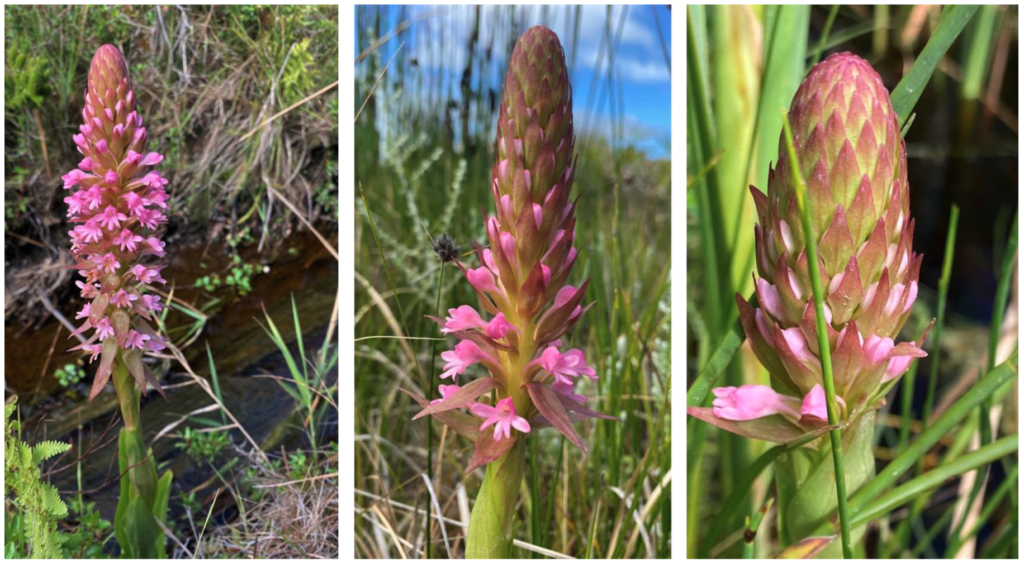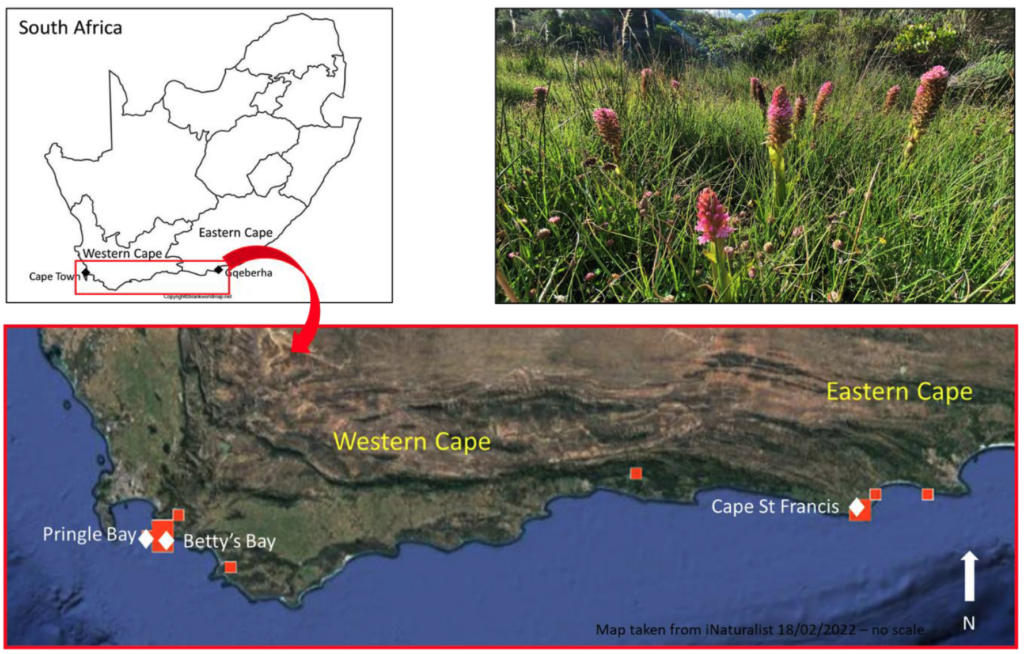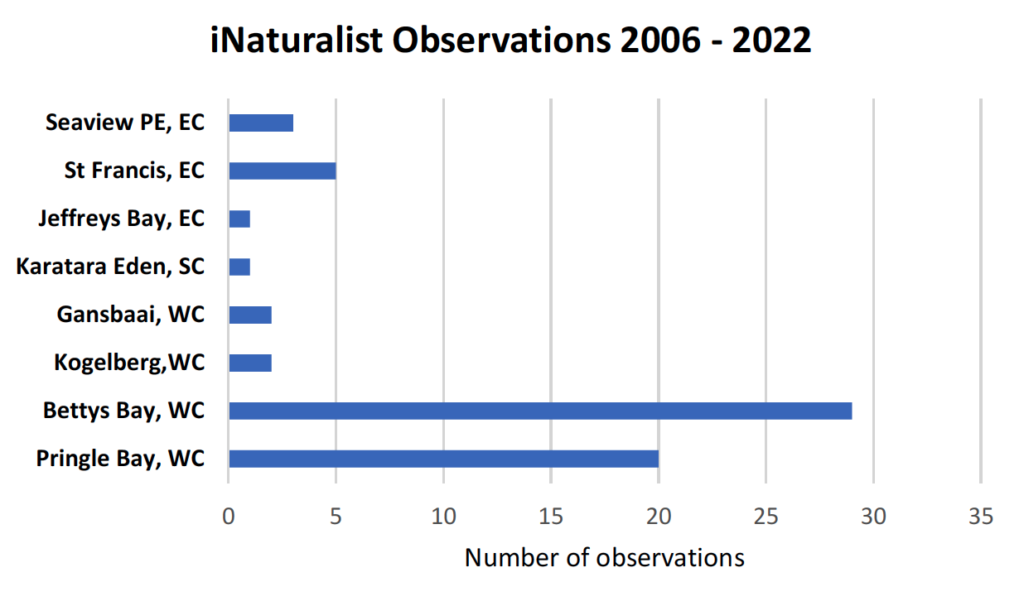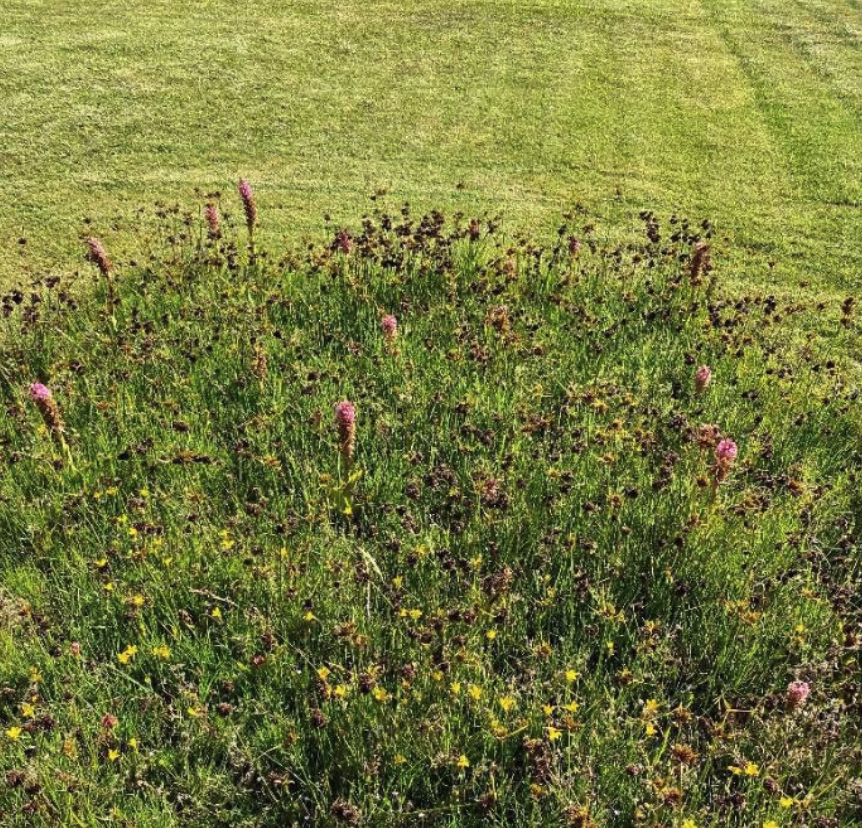The Endangered Satyrium hallackii Bolus subsp. hallackii
Text and photography by Jenny Parsons
Email: jennyparsons63@gmail.com Instagram: jenny.parsons.568
Satyrium is a genus of 91 species of which 88 occur in Africa (41 occur in South Africa) and 3 in Asia. The mountains of the Rift Valley, Drakensberg and the Cape Floristic Region (CFR) are the three main areas of diversity and the CFR has the highest concentration of 32 species1.
Manning2 describes the genus as tuberous perennials, leaves scattered along the stem and sheathing it. Flowers in a dense sometimes head-like raceme are non-resupinate. A diagnostic feature of Satyrium flowers is the unique twin-spurred lip and plants are terrestrial or lithophytic1 (grow on rocks).

Figure 1: Satyrium hallackii hallackii in situ, inflorescence and in bud (Pringle Bay)
Satyrium hallackii subsp. hallackii is rare and found in isolated populations in the Western and Eastern Cape of South Africa. The common name is ‘pink satyr’ and they flower between November to January. This subspecies is distinguished by the short spurs which are 7 to 14 mm long3. Considered Endangered and under threat from habitat loss and alien vegetation. In the Western Cape subpopulations at Hout Bay, Muizenberg and the Cape Flats are now extinct4. This endemic orchid is restricted to the Western and Eastern Cape (Figure 2).

Small local subpopulations in the Overberg are found in Pringle Bay, Betty’s Bay and inland of Gansbaai. Observations on iNaturalist indicate that the range extends from the Western Cape to the Eastern Cape (Figure 2). No records were observed north-east of Gqeberha in the Eastern Cape. Records date from 2006 to 2022 of which 72% were recorded in the last 3 years (Figure 3).

Typical habitat is described as moist coastal areas with brackish soils behind the dune slack (Stewart et al, 1982). Habitat descriptions on iNaturalist included:
- Growing in a moist area near a ditch/channelized river
- Growing in a marshy plot in a Betty’s Bay
- Growing along edge of road in drain which has water in it most of the year.
- Growing in the wetland on St Francis Links.
- Growing in freshwater marsh area just above coastal rock pools
In Pringle Bay the population is confined to a small area which is wetland which has been channelized for drainage and development of erven. The Betty’s Bay population is largely within 300m to the beach and is common on road verges next to the drainage ditches or on a few undeveloped erven situated in wetland habitat (Figure 4).
Threats to Satyrium halackii halackii in the Overstrand villages are due to urban development i.e. erven clearing and building plus road stormwater management is reducing the naturally wet habitat preferred by these rare and local orchids. Invasive alien vegetation and garden landscaping also play an important role in the decline of this species.
The population in Pringle Bay was reduced from approximately 30 plants counted in 2019, 2020 and 2021 to approximately 15 in the 2022 flowering season. A 50 % decline which has put this population at risk of extinction in the next 5 years. One site in Pringle and one in Betty’s Bay is protected due to residents who are aware of the Endangered status.

A population count was conducted on 1 January 2022 with Sandy Immelman (Betty’s Bay Conservancy) where approximately 75 plants were found in an area of <1 km2 (Figure 5). However, many of the erven are for sale and will be developed in the future.

In conclusion, Satyrium hallackii hallacki is Endangered and the current surviving populations in both Pringle and Betty’s Bay are at risk of substantial loss due to urban development. At the current rate these populations may well be extinct in the next decade.
Jenny Parsons
(Kogelberg CREW)
References
1 Liltved, W.R. and Johnson, D.J. 2012. The Cape Orchids: A regional monograph of the orchids of the Cape Floristic Region, Vol 1. Graphicraft, Cape Town.
2 Manning, J. 2007. Field Guide to Fynbos. Struik Nature, Cape Town.
3 Johnson, S and Byterbier, B. 2015. Orchids of South Africa: A Field Guide. Struik Nature, Cape Town.
